#ivo may have lost the series but he won the titles
Explore tagged Tumblr posts
Photo


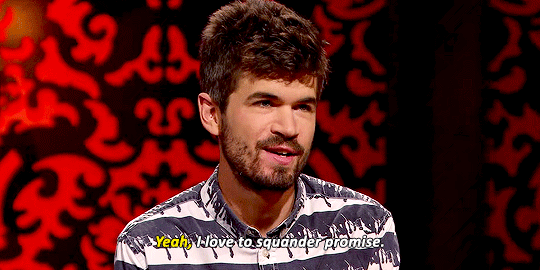
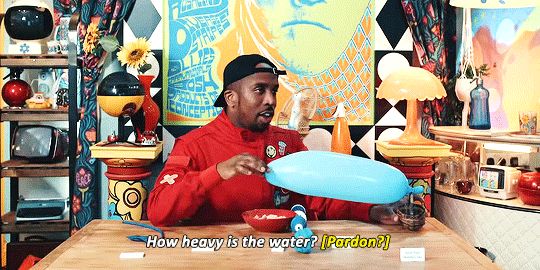


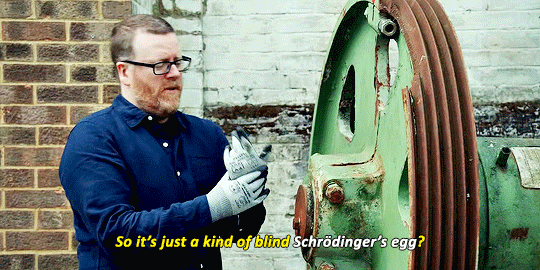
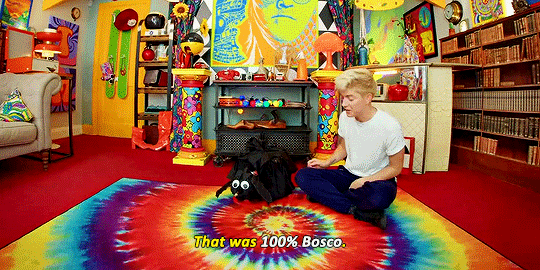

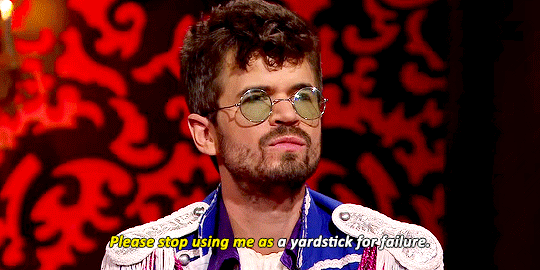
TASKMASTER Series 15: Episode Titles
#taskmaster#taskmasteredit#ivo graham#frankie boyle#kiell smith bynoe#greg davies#alex horne#mae martin#gif#ivo may have lost the series but he won the titles#unlike poor jenny who merely inspired one
2K notes
·
View notes
Link
Joining the previously announced David Tennant who plays the title role, Adrian Scarborough as Stan and Gawn Grainger as Louis are Theo Barklem-Biggs (Pete), Mark Ebulué (Aloysius), Mark Extance (ensemble), David Jonsson (Col), Dominique Moore (Lottie), Emma Naomi (ensemble), Alice Orr-Ewing (Mattie and Ruby), Himesh Patel (Vagabond), Adrian Richards (ensemble), William Spray (ensemble), Danielle Vitalis (Elvira) and Eleanor Wyld (Dalia) who complete the cast for Patrick Marber’s Don Juan in Soho.
“Please don’t be charmed, he’s not a lovable rogue…” Loosely based on Molière’s tragicomedy ‘Don Juan’, this savagely funny and filthy modern update transports the action to contemporary London and follows the final adventures of its debauched protagonist – a cruel seducer who lives only for pleasure.
Rehearsals begin next week for the production which previews at Wyndham’s Theatre from 17 March 2017, with press night on 28 March 2017. Don Juan in Soho will complete its strictly limited eleven week run on 10 June 2017.
Direction is by Patrick Marber with set and costume designs by Anna Fleischle, lighting by Mark Henderson, compositions and sound by Adam Cork, video design by Dick Straker, movement by Polly Bennett and casting by Robert Sterne CDG.
[See image gallery at http://ift.tt/1FpwFUw] David Tennant (DJ) has worked extensively in theatre, television and film winning numerous awards for his work including the Critics’ Circle Award for Best Shakespearean Performance and the National Television Award for Outstanding Drama Performance. For the Royal Shakespeare Company his credits include Richard II, a role he reprised last year at the Barbican and at the Brooklyn Academy of Music in New York, As You Like It, The Herbal Bed, The Comedy of Errors, Romeo and Juliet, A Midsummer Night’s Dream, Love’s Labour’s Lost and the title role in Hamlet, as well as co-hosting the live broadcast of Shakespeare 400. Tennant was last in the West End playing Benedick in Much Ado About Nothing. His film credits include What We Did On Our Holiday, The Decoy Bride, Fright Night, Nativity 2: Danger in the Manger!, St Trinian’s II: The Legend of Fritton’s Gold, Harry Potter and the Goblet of Fire, Bright Young Things, LA Without a Map and the forthcoming Mad To Be Normal, Fish Without Bicycles and Bad Samaritan. On television he is best known for playing the tenth incarnation of the Doctor in the BBC’s classic series Doctor Who. He is soon to appear in the third season of ITV’s award winning series Broadchurch and starred in the US version, Gracepoint. His other television credits include playing Kilgrave in Netflix’s Jessica Jones, and The Escape Artist, The Politician’s Husband, Spies of Warsaw and Casanova, all for the BBC.
Adrian Scarborough (Stan) was last on stage as The Fool in Sam Mendes’ production of King Lear at the National Theatre where his many credits also include After the Dance, The Habit of Art, Time and the Conways, Henry IV Parts 1 & 2, The False Servant, Rosencrantz and Guildenstern are Dead, The David Hare Trilogy, The Day I Stood Still and The Wind in the Willows. In the West End his credits include Betty Blue Eyes and Humble Boy. He has also been seen in Hedda Gabler at The Old Vic, Platonov and Vassa for the Almeida Theatre Company and Accidental Death of an Anarchist and To The Green Fields Beyond for the Donmar. His film credits include On Chesil Beach, Les Misérables, The King’s Speech, Elizabeth: The Golden Age, Notes on a Scandal, Vera Drake, Gosford Park, The History Boys, Bright Young Things, The Madness of King George and Dirty Pretty Things. Scarborough’s many television credits include two seasons of the US series Blunt Talk opposite Patrick Stewart, Stella, Crashing, Miranda, Up The Women, Professor Branestawm, Plebs, Edge of Heaven, Death in Paradise, The Paradise, Restless, Doctor Who, Mrs Biggs, Upstairs Downstairs, Gavin and Stacey, Cranford and Psychoville.
Gawn Grainger (Louis) was most recently on stage in The Entertainer for the Kenneth Branagh Theatre Company at the Garrick Theatre. His other theatre credits include The Cherry Orchard at the Young Vic, Macbeth at Shakespeare’s Globe and The Recruiting Officer at the Donmar as well as Onassis, Absolutely Perhaps and The Crucible all in the West End. For the National Theatre where he was part of Olivier’s South Bank inaugural season, his credits include Three Days in the Country, A Woman Killed With Kindness, Some Trace Of Her, Sing Yer Heart Out For The Lads, The Passion, The Seagull and The Misanthrope and at the Almeida he has been seen in No Man’s Land, Party Time, Mountain Language and The Last Days of Judas Iscariot. His film credits include Blood Royal, A Christmas Carol and The Little Drummer Girl and on television Labyrinth, The Nativity, Big Deal, The Black Tower, Dalziel and Pascoe, The Darling Buds of May, Foyle’s War, Gentlemen and Players, Hail, Caesar!, Heart of the Country, A Helping Hand, Hetty Wainthropp Investigates, Macbeth, Man at the Top, Men Behaving Badly and Midsomer Murders.
Theo Barklem-Biggs’ (Pete) theatre credits include Les Liaisons Dangereuses for the Donmar and Chapel Street for the Bush theatre. His film credits include Journey’s End, The Greatest Man, Kingsman: The Secret Service, The Inbetweeners Movie and the forthcoming Hunter Killer. His many television credits include Wasteman, Ballot Monkeys, Cradle to Grave, Tatau, Homeboys and Miranda.
Mark Ebulué’s (Aloysius) theatre credits include Macbeth for the Young Vic, Julius Caesar for the Royal Shakespeare Company, Phaedra’s Love for the Arcola and touring productions of Hamlet for Tara Arts and Othello for Frantic Assembly. His film credits include Kingsland, Dark Ascension and Way of the Monkey’s Claw. On television his credits include Stan Lee’s Lucky Man, Doctor Who and Julius Caesar.
Mark Extance’s (ensemble) recent theatre credits include Correspondence at the Old Red Lion, Three Days in the Country, Scenes from an Execution, Travelling Light and London Assurance for the National Theatre, Pygmalion at The Old Vic and Yes, Prime Minister in the West End and on tour.
David Jonsson’s (Col) theatre credits include Mary Stuart for the Almeida Theatre, Pigeon English at Bristol Old Vic and the Edinburgh Fringe, Romeo and Juliet at the Riverside Studios and Ghosts for the Rose Theatre Bankside.
Dominique Moore (Lottie) is best known for playing Chanel O’Grady in Footballers Wives: Extra Time. Her other television credits include Murder in Successville, Quacks, Horrible Histories, Red Dwarf and PhoneShop. Her theatre credits include Gutted for Theatre Royal Stratford East, Aladdin for the Lyric Hammersmith and The Lion King at the Lyceum Theatre. Her film credits include First and The Physician.
Emma Naomi’s (ensemble) theatre credits include Deathwatch for the Print Room at The Coronet, The Crucible for Bristol Old Vic and This Man Right Here for the Hen and Chickens. On film she has been seen in House Girl.
Alice Orr-Ewing’s (Mattie and Ruby) theatre credits include An Enemy of the People for Chichester Festival Theatre and Hay Fever at Theatre Royal Bath and Duke of York’s Theatre. Her film credits include The Theory of Everything, Mr Turner, The Scapegoat and Atonement and on television she has been seen in Victoria, Oakfield, Pramface and Blandings.
Himesh Patel (Vagabond) played the role of Tamwar Masood in EastEnders for nine years. He was last on stage in Le Bossu at the 2016 Edinburgh Fringe Festival.
Adrian Richards’ (ensemble) theatre credits include Wild Honey for Hampstead Theatre, The Suicide for the National Theatre and Advice for the Young at Heart for Theatre Centre. He has also performed in Die Entführung aus dem Serail at Glyndebourne.
William Spray’s (ensemble) theatre credits include Hamlet, Twelfth Night and But a Dream for Sovereign Arts and Punk Rock for Pocketful Shows. His opera credits include The Indian Queen for English National Opera and Dido and Aeneas for Silent Opera. On film he has been seen in A Little Chaos.
Danielle Vitalis’ (Elvira) stage credits include Girls Like That for Synergy and Primetime at the Royal Court. Her film credits include Afro Punk Girl and Honeytrap and on television she has been seen in Youngers and The Riots: In Their Own Words.
Eleanor Wyld (Dalia) was last on stage in The Alchemist at the Royal Shakespeare Company where her credits also include Don Quixote and Doctor Faustus. Her film credits include Johnny English Reborn and Freestyle and on television her credits include Thirteen, Father Brown and Misfits.
Patrick Marber’s plays include Dealer’s Choice, After Miss Julie, Closer, Howard Katz, Three Days in the Country and The Red Lion. His film credits include Closer (directed by Mike Nichols), Notes on a Scandal (directed by Richard Eyre), Old Street and Love You More. For television his co-writing credits include The Day Today and Knowing Me, Knowing You With Alan Partridge. In December last year Ivo van Hove directed Marber’s new version of Ibsen’s Hedda Gabler for the National Theatre starring Ruth Wilson and Rafe Spall. As well as directing a number of his own plays, his other directing credits include Travesties by Tom Stoppard at the Menier Chocolate Factory, which transfers to the Apollo Theatre this month, The Caretaker at the Comedy Theatre, Blue Remembered Hills at the National Theatre, ‘1953’ by Craig Raine at the Almeida and The Old Neighbourhood by David Mamet at the Royal Court Theatre. His plays have won Evening Standard, Olivier, Time Out, New York and London Critics’ Circle and Writers’ Guild Awards. His TV work has received BAFTA, British Comedy and Royal Television Society Awards. His screenplays have been nominated for Golden Globe, BAFTA and Academy Awards. He received the British Independent Film Award for Notes on a Scandal.
Wyndham’s Theatre 32-36 Charing Cross Road, London, WC2H 0DA
Additional Information Age Restrictions: Not recommended for anyone under the age of 16 Booking From: 17th Mar 2017 Booking Until: 10th Jun 2017
http://ift.tt/2fJajpk LondonTheatre1.com
0 notes
Text
NASCAR and Indy 500 Deaths Cast Shadow On 1964 Racing Season
1964.
American auto racing exploded this season, both figuratively and, alas, literally. The year was barely two weeks old when Joe Weatherly hit a wall at Riverside, becoming NASCAR’s first reigning Grand National champion to die in competition. Another stock-car superstar, Fireball Roberts, was critically burned at Charlotte in May, developed blood poisoning and pneumonia, and succumbed in July. Jimmy Pardue was killed testing tires at Darlington. On Memorial Day weekend, with thousands in movie theaters watching the first closed-circuit Indianapolis 500 telecast and the whole nation listening on radio, the worst accident in Indy history claimed Eddie Sachs and Dave MacDonald. Top Fuel’s casualties included Southern California crowd favorites Boyd Pennington and John Wenderski.
Simultaneously, all types of motorized competition were enjoying unprecedented attention from folks besides traditional gearheads. Racing was rapidly expanding from a participant-oriented, niche activity into mainstream entertainment for sports fans who’d previously followed stick-and-ball games exclusively. The challenge presented to exotic European marques by American-made Corvettes, Cobras, and Cheetahs made sports car racing so appealing that one road course, Riverside International Raceway, was able to pull big crowds to meets staged just two weeks apart this October.
Petersen Publishing Company’s newest slick monthly Sports Car Graphic flourished with subscribers and advertisers alike. Established sister publications HOT ROD and Car Craft expanded event coverage and race-car tech on pages previously reserved for street-car features, go-karts, model cars, new-car tests, and basic hop-up how-tos. Chrysler’s second-generation Hemi and Ford’s answer engine, the overhead-camshaft 427, each earned comprehensive technical articles that uncovered every component. Detroit’s handbuilt “factory hot rods” and dragster teams’ obsession with legitimately breaking the 200-mph “barrier” combined to create unprecedented interest in drag racing. This year alone, Robert E. Petersen’s powerful monthlies were joined on news racks nationwide by two independent titles dedicated to drag racing exclusively: Virginia-based Super Stock & Drag Illustrated and Los Angeles–produced Drag Racing magazine. The straight-line sport also continued to support a pair of weekly tabloids, Drag News and Drag Sport Illustrated.
More so than for any season yet revisited in our series, this year’s highlights cannot be adequately covered in the 10 pages allotted to each Power Struggles installment. More than 3,000 rolls of black-and-white film were exposed by staff photographers and writers between January and December, most of which are preserved in the archives maintained by PPC’s corporate successor, The Enthusiast Network. From those tens of thousands of individual images, we’ve prioritized outtakes that, though rejected by our editorial ancestors, tell 1964’s stories as well or better than the photos printed in major Petersen monthlies—or maybe not. Judge for yourself, now that the hundreds of shots published by HRM’s editors are viewable online. The HOT ROD Club gives Platinum members unlimited access to every page of every issue since Volume One, Number One (January 1948), for a modest annual fee. We go there often for research, from wherever we are, using whatever Internet device is handy. Find details at club.hotrod.com.
Back-to-back explosions of two near-full fuel tanks, each containing about 40 gallons of gasoline, consumed the cars of Dave MacDonald and Eddie Sachs on the second lap of the Indianapolis 500. Sachs is believed to have been killed upon impact, while MacDonald was ejected and died hours later in a hospital. Speculation about why MacDonald, a rising sports car star known for fearlessness, lost control of Mickey Thompson’s year-old racer ranged from rookie inexperience to aerodynamic issues resulting from ill-advised body modifications. A half-century later, an entire book was written about Thompson’s two-car team, the several drivers who tested his revolutionary Indy cars, the accident itself, and its immediate aftermath: Black Noon—The Year They Stopped The Indy 500, by Art Garner. (Photo: Bob D’Olivo)
The steel barrier bordering Riverside International Raceway’s notorious Turn Six remained imprinted by Joe Weatherly’s Mercury following his fatal crash midway through January’s Motor Trend 500. Either a stuck throttle or brake failure apparently propelled the two-time-defending NASCAR champion into the barrier at approximately 80 mph. Weatherly, who preferred a loose lap belt to the shoulder harnesses already in use by some competitors, died instantly when his head exited the window opening and hit the wall. (See Apr. ’64 HRM & MT.) Shown passing the eerie reminder is third-place-finisher Fireball Roberts, who himself died this year from injuries suffered in a fiery wreck at Charlotte. (See Aug. & Sept. ’64 MT; Jan. ’65 MT.)
Earlier in that fateful Riverside weekend, Mercury teammates Joe Weatherly (right) and Dave MacDonald chatted in the pits. Four months later, MacDonald died after triggering the Indy 500 crash that also claimed Eddie Sachs.
Riverside’s road course was particularly tricky and treacherous for heavy stock cars. Clem Proctor’s 427ci Galaxie was an early casualty of the Motor Trend 500, crashing on the 15th of 185 laps. Eddie Gray (98) ultimately advanced from 39th (of 44) qualifying position to finish 12th in Ralph Shelton’s year-old Mercury.
Nitromethane officially returned to NHRA at the season-opening Winternationals, ending the seven-year fuel ban. Jack Williams (far lane) emerged victorious in Saturday’s 31-car AA/Fuel Dragster class competition, thereby earning automatic entry into Sunday’s Top Fuel Eliminator final round. His semifinal victim was favored Chris Karamesines (near side). Following a frantic overnight trip to Bakersfield to replace the Crossley, Williams & Swan team’s wounded Chrysler, Jack returned just in time to meet and defeat Tommy Ivo in Sunday’s grand finale, 8.16/193.12 to 8.24/191.48. Williams went on to win June’s inaugural Hot Rod Magazine Championships and Fremont’s summer regionals, finish second at September’s NHRA Nationals (to Don Garlits), and accumulate enough points to become NHRA’s first Top Fuel world champ. Car Craft rewarded the team with a comprehensive technical article in the Mar. ’65 issue. (Also see Pomona event coverage, Apr. ’64 HRM & May ’64 CC.)
Chrysler’s second-generation Hemi (right) was an instant NASCAR success, powering Plymouths to a top-three sweep in its Daytona 500 debut and snapping Ford’s two-year, 10-race undefeated streak in NASCAR races of 500 or more miles. Richard Petty’s first big win was also the first major Grand National victory for Plymouth in 14 years. Teammates Jimmy Pardue and Paul Goldsmith finished second and third, respectively. (See May ’64 MT.)
His son’s breakthrough win followed Lee Petty’s victory in the inaugural 1959 Daytona 500. This was the first major auto race ever won by a both a father and son. Lee, who retired from driving not long after recovering from a spectacular crash in the 1961 500 (see Nov. ’16 HRD), became NASCAR’s only three-time Grand National champion (1954, 1958, 1959) before transitioning to team owner and crewchief.
The end of the domination enjoyed since the late 1950s by the blown Willys of KS Pittman and engine-builder John Edwards was punctuated by this crushing defeat at Bakersfield’s U.S. Gas and Fuel Championships. Bones Balogh (far lane) won the A/Gas Supercharged trophy dash with an unprecedented 9.77-second blast in John Mazmanian’s candy-red Willys (at 146.56 mph). Bones also swept both the 1964 NHRA Winternationals and Hot Rod Championships .
The quickest and fastest “stockers” of early 1964 were a trio of blown, injected exhibition cars built by Dragmaster Co. for Detroit promoter Don Beebe, who hired Jimmy Nix (far lane) and Jim Johnson as fulltime drivers. NHRA created the Supercharged/Factory Experimental category specifically for these cars, with one condition: that they race only against each other. Prior to this April appearance at San Diego Raceway, Johnson had clocked high 10s at 141 mph in testing at Lions Drag Strip, at a time when conventional, carbureted A/FXers were running mid-11s and low 120s. The promising program was plagued from the start by track and towing accidents that ultimately resulted in its early, ugly conclusion (as detailed in HRM’s May ’09 recollections by Johnson), but not before a national tour inspired countless little-guy racers to bolt on blowers and “turn pro.” One of the Chargers survived and has been fully restored. (See July ’64 & May ’09 HRM.)
Imagine Ak Miller’s surprise, drifting through this corner between clueless spectators. The five-time Pikes Peak winner’s new Cobra Kit Special was actually a Devin body adapted to an AC Bristol chassis, all powered by a 289 Ford equipped with Carroll Shelby’s Cobra engine package. He finished second in the Sports Car class to Bobby Unser’s mid-engined Lotus-Climax.
For the second straight year, Parnelli Jones topped the Stock Car category in a Mercury Marauder. His record-setting time of 13:52.2 was the first under 14 minutes for a stocker on the 12.42-mile, all-dirt course.
The five-amber Drag-Tronics electronic system that debuted a year earlier was not well received by open-wheel racers accustomed to flag starters or single-bulb, “instant-green” starts. After John Batto red-lighted during NHRA’s Northern California Regional Championship, his pissed-off push-truck driver intentionally chopped down Fremont Raceway’s Christmas tree. Eventual national-champion Jack Williams added critical NHRA points by taking Top Fuel Eliminator at a meet that saw Denny Milani come oh-so-close to officially breaking the 200-mph barrier, settling for a new national record of 198.66 in Ted Gotelli’s fueler.
In August, puddling water, high winds, and rough salt added up to some of the worst conditions ever seen at Bonneville, shortening the course to 6.5 miles. Nevertheless, Burt Munro had come all the way from New Zealand, determined to hit 200 mph with the Indian Scout he’d purchased brand-new in 1920. He wobbled and weaved his way up to 184 mph on a wild ride that hammered loose a lock nut in the rear wheel and, he later learned, broke his back. Despite the pain from what proved to be a dislocated spine, the 65-year-old repaired the bike, made time for the ladies, and was next in line for a record attempt when 70-mph winds prematurely ended the 16th Bonneville Nationals. (See Nov. ’64 HRM & CC, Dec. ’64 MT.)
Ford Walters spent most of Speed Week trying to work the bugs out of the first steam-powered car ever seen on the salt. He reminded HRM’s Eric Dahlquist that a steamer had set a land speed record of 127 mph in 1906, but never came close to that speed 58 years later.
His youthful pit crew pushed Dick Beith off to multiple attempts at the H/Streamliner record of 144.436 mph, but the swoopy minicar’s 44ci Mercury outboard engine topped out at 141.50.
Despite a rare focus flub by chief PPC photographer Bob D’Olivo, his smoky shot clearly illustrates one reason why race reports credited Jack Chrisman with stealing the show at NHRA’s Nationals. The other was the noise produced by a supercharged, injected Ford 427 Hi-Riser, the first blown-fuel motor ever installed in a new car. Laughingly classified as a B/Fuel Dragster, the world’s original fuel Funny Car clocked low-10-second e.t.’s at 156.31, the quickest and fastest times ever recorded by a late-model “stocker.” Prior to Chrisman’s conversion, the same body had dominated early season A/Factory Experimental competition. With Bill Shrewsberry driving, the carbureted Comet Caliente won class at the NHRA Winternationals, Bakersfield’s March Meet, and Riverside’s Hot Rod meet, running 11.30s at nearly 125 mph. (See Sept. ’64, Nov. ’64 & July ’65 HRM.)
The cab-forward pickup truck that accidentally invented exhibition wheelstanding was intended for land-based A/FX competition. Dodge teammates Dick Branstner and Roger Lindamood, this year’s NHRA Nationals Stock Eliminator champions with their Hemi-powered Color Me Gone (background), took over the project after Jim Schaeffer and John Collier prepared the body and started on the chassis. Moving back the original, 101-hp Slant Six’s location by 20 inches placed fully 52 percent of the weight on the rear wheels—and produced midtrack powerstands that proved uncontrollable until Bill “Maverick” Golden ultimately took the wheel and created a career. (See Dec. ’64 CC.)
After GM shut off sponsorship to road-racing teams in early 1963, then suddenly stopped supplying Corvette parts for Bill Thomas Race Cars’ Cheetah program this year, it was left to a handful of independents to defend Chevrolet’s honor against a fleet of Ford-backed Cobras. The 1,500-pound, 377ci Cheetah ran away from them on straightaways, but was twitchy in the corners. Seattle Chevy dealer Alan Green campaigned this much-modified model extensively in 1964. Allen Grant was driving at Riverside’s Los Angeles Times Grand Prix in early October. (See Sept. ’63 & Mar. ’64 HRM; May ’13 HRD.)
Shown are the same car and driver, at the same Riverside event, demonstrating the Cheetah’s unnerving tendency to suddenly swap ends in turns. Allen Grant managed to keep Alan Green Chevrolet’s entry intact and make it back to Riverside two weeks later for a nonpoints meet sponsored by Petersen’s Sports Car Graphic magazine, but again spun out of contention.
Bob D’Olivo captured 27-year-old Bruce McLaren enroute to winning Riverside’s 200-mile qualifying race for the Los Angeles Times Grand Prix, the first victory of a spectacular career. Powered by a Traco-built, all-aluminum Olds F-85 V8, the prototype McLaren-Elva Mark I started on the pole for the next day’s main event and led two laps before retiring with breakage. (See Jan. ’65 MT.)
This helicopter got the attention of the starter and starting-line photographers by crash landing at Riverside Raceway. Contrary to a banner evidently left over from an SCCA meet two weeks earlier, this late-October event was actually the season-ending American Road Race of Champions. Amateur drivers qualified by finishing among the top four in their respective classes and SCCA regions. Petersen’s Sports Car Graphic magazine sponsored the nonpoints meet that is considered the template for the annual SCCA Championships introduced a year later. (See Feb. ’65 MT.)
In September, Dick Landy converted the ’64 Super Stocker seen at the NHRA Nationals into a prototype for the altered-wheelbase Dodges and Plymouths destined to change the face of drag racing in January 1965. Still sporting primered traces of the bodywork required to relocate its rearend and a straight front axle from an A-100 van, the outlaw combination was a major match-race attraction during a brief Eastern tour at the end of this season. (See Feb. ’65 HRM.)
For multiple reasons, these archive negatives have baffled us for years. Photographer Darryl Norenberg exposed four B&W rolls at a private test session of the earliest SOHC 427-equipped Mustang we’ve found on film. The fact that he rushed that film to PPC’s photo lab on December 31, New Year’s eve, indicates some urgency to get exclusive images processed, printed, and into print ASAP, yet none ever appeared in any magazine that we’ve examined. Externally, the test car looks identical to the fleet of A/FX fastbacks that would debut here a month later for NHRA’s Winternationals. Under the hood, however, sits the only single-carb intake we’ve seen on a Cammer Mustang. Fifty-three years later, FoMoCo expert Rick Kirk reveals that this red 2+2 was the very first SOHC model built. It was hauled from Michigan to Pomona for midwinter testing not possible in the frigid Midwest. Ford racing boss Charlie Gray and drag-team-leader Dick Brannan also made the trip. Because an eight-barrel intake was still being developed by Ford, they made do with a manifold presumably designed—like the cylinder heads—for single-carb NASCAR competition. Both Gas Ronda and Bill Ireland later campaigned this car, which became known as Goldfinger and was ultimately crushed by the factory. The one mystery that Kirk can’t solve is why such a hot scoop of a story never made print. Alas, the photographer and PPC’s editors took that answer to their graves.
Indianapolis Motor Speedway’s red flag flew for 90-plus minutes while crews removed wrecked cars, cleaned the track, and finally restarted the only 500 ever stopped by something other than rain.
Starting from 14th position in the fifth row, Indy rookie Dave MacDonald passed five cars in the first lap before losing control exiting Turn Four, hitting the wall, exploding in flames, and spinning across the track in front of Eddie Sachs. MacDonald was ejected and survived, badly burned, for a few hours.
A second explosion erupted when Ted Halibrand’s Shrike drove into Mickey Thompson’s flaming Sears-Allstate Special, both of which were loaded with nearly full tanks of gasoline. Veteran driver Eddie Sachs reportedly died on impact.
Eventual winner A.J. Foyt isolated himself for the duration of the cleanup, either unaware of or unwilling to accept reports of any mortally wounded competitors. Event coverage reported that when he finally glanced down and read the headline across a makeshift edition of the Indianapolis Star handed to him by someone from the newspaper, his expression instantly changed from elation to depression—as evidenced by Bob D’Olivo’s chilling sequence.
The post NASCAR and Indy 500 Deaths Cast Shadow On 1964 Racing Season appeared first on Hot Rod Network.
from Hot Rod Network http://www.hotrod.com/articles/nascar-indy-500-deaths-cast-shadow-1964-racing-season/ via IFTTT
0 notes